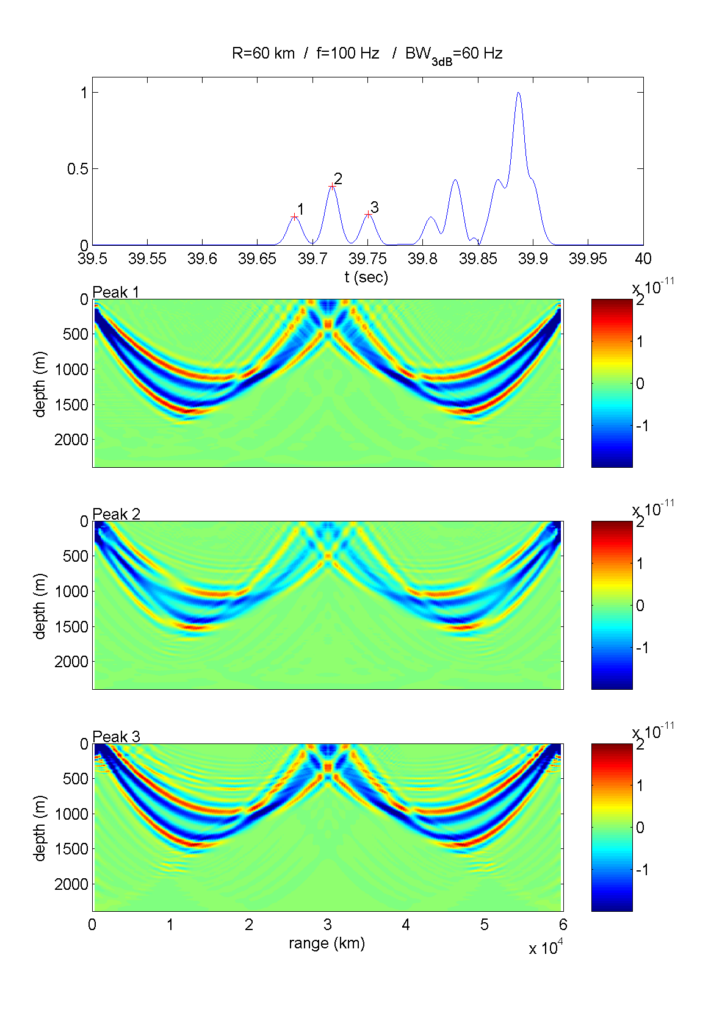The ability to monitor the heat content of ocean basins is important for understanding the role of the oceans in climate change, as well as for studying ocean variability and large-scale ocean processes. Although the upper ocean is routinely monitored on large scales by satellite remote sensing and ARGO floats, there are significant observational gaps in high-latitude areas due to the presence of ice. These gaps can be filled by using acoustic monitoring techniques.
Ocean acoustic tomography was introduced by Munk and Wunsch as a remote-sensing technique for large-scale monitoring of the ocean interior using low-frequency sound. Measuring the travel times of pulsed acoustic signals propagating from a source to a distant receiver through the water mass over a multitude of different paths, and exploiting the knowledge about how travel times are affected by the sound-speed distribution in the water, the latter can be obtained by inversion. Further, sound speed is related to temperature and, thus, ocean acoustic tomography can be used for the study of gyre- and basin-scale temperature and heat-content variability (acoustic thermometry).

In Task 3.5 methods and tools for inversions of long-range, low-frequency acoustic receptions will be developed focusing on the wave-theoretic character of the acoustic observables, in particular highly dispersive modal arrivals, and exploiting the sensitivity behavior of the corresponding travel times. The methods will be tested on existing data from the CAATEX experiment and will then be applied for the analysis of data collected under WP2.